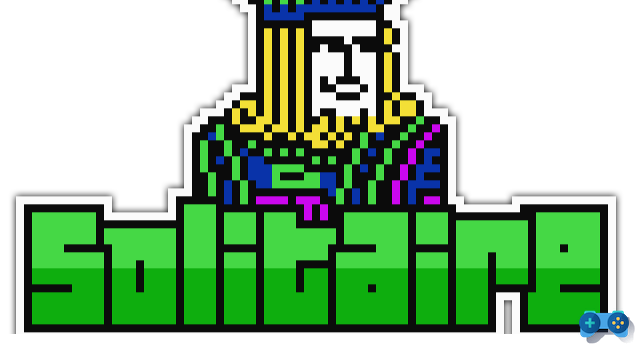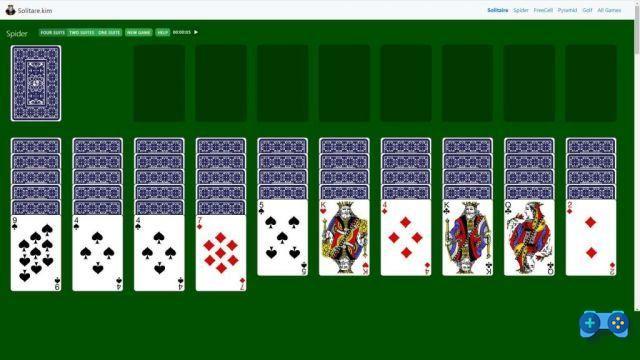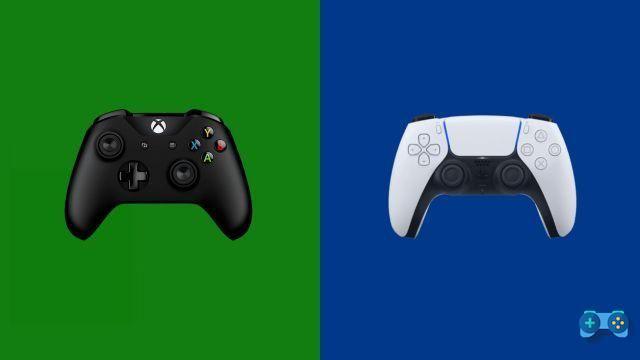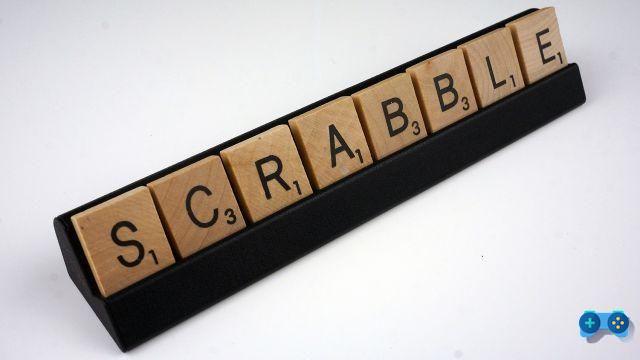
One of the most popular games in the world
With the term solitary means any board game that you can play alone, usually with cards. The term "solitaire" is also used for single player concentration and skill games that use tiles, pegs or stones characterized by having a fixed layout (colored or not). These games include solitaire, peg and mahjong solitaire. Most games in the genre work like a puzzle which, due to a different starting position, may (or may not) be solved differently each time.
The origin of the solitaire is still the subject of much debate today. The term Patiencespiel appears in Das neue Königliche L'Hombre-Spiel, a German book published in 1798. Such books are said to have also appeared in Sweden and Russia in the early 1800s. There are further references to solitaire in French literature. In the United States, the first card solitaire, Patience: a series of thirty card games, was published by Ednah Cheney in 1870.
Over the years, the classic game of solitaire has also taken on the name of Klondike Solitaire. It's a type of game that has been around for centuries, and although it was originally played using a physical deck of cards, many players remember it as one of the most classic and iconic computer games. In fact, starting from the end of the 90s, any Windows PC was equipped with versions of Solitaire very inspired, to say the least Freecell e Spider (which we will talk about later). With the advent of the Internet, social networks and smartphones, the solitaire is still an icon today but the way it is used has changed. The user is increasingly oriented to make use of such titles available for free on the Web.
How to play?
The writer has literally consumed the mice (not optical but with the wheel). Klondike Solitaire uses a standard deck. A deck of cards has four suits: hearts, clubs, spades and diamonds. Each suit is ranked from 1 to 13. The cards are shuffled and dealt in piles. The first pile has one card and each subsequent pile has one more card than the previous one. Only the last card of each pile is face up so that it is visible to the player. The goal is to sort the cards into piles of suits in ascending order.
FreeCell
Il Freecell is a variant of solitaire, played with a deck of playing cards. This game made a name for itself mainly because it was made available on Windows XP, Windows Vista and Windows 7.
- A standard 52-card deck is used.
- There are four free cells and four more to place the cards on the stack. Some alternative rules use ten cells.
- The cards are dealt face up in eight “cascades,” four of which comprise seven cards each and four of which comprise six cards each. Some alternative rules use four to ten cascades.
The deck from 52 cards excludes jokers (or jokers). Then eight rows of cards will be dealt face up: the first four are made up of seven cards per row and the other (four) six per row. And this is where things get interesting. In fact, in our mind we must think that we have four free cells (hence the origin of the name freecell) on which we can place four cards at will, and four other cells on which to place the cards in ascending order of suit.

(2M) × (N + 1)
Also in this variant as well as in other types of solitaire the player is given the right to move a row of cards in ascending order and above all by alternating the colors red and black. When one of the eight boxes is now empty it is therefore possible to place a card or a row of cards (K, Q, J and so on) at the player's discretion. The mathematical equation for the number of cards that can be moved is (2M) × (N + 1), where M is the number of empty cascades and N is the number of empty cells.
The free cells, however, are characterized by a particular node, in fact, when they are all free it is possible to move a row composed exclusively of five cards; when a cell is occupied it is possible to move a row of four cards, when two cells are occupied three cards and so on. The basic idea is that each movement must be separated into single cards and using the free cells as a sort of support: for example, to move a stack made up of 5-4-3, it is necessary to have two spaces available where place (and then answer) the 4 and 3 then move the 5, and proceed to erect the pile at a later time.
The game is won after all the cards have been moved to their base piles. It is estimated that 99,999% of the possible "puzzles" are solvable. Offer number 11982 from the Windows version of FreeCell is an example of an unsolvable FreeCell agreement.
Spider
Spider is another "patience" game, and is one of the most popular two-deck solitaire games ever created. The game originated in 1947 and its name comes from the eight legs of a spider and another similar game called Scorpion, which refers to the eight piles of cards that must be filled in order to win the game.
The main goal of the game is to remove all the cards from the board by assembling rows before removing them. Initially, 54 cards are dealt on the board in ten piles, face down with the exception of the top cards of each pile. The stacks must be placed in descending sequence from King to Ace. The colors of the card are not important, but the stacks and suits must match when removing a sequence from the board. A typical Spider layout requires the use of two decks. The board consists of 10 piles with 6 cards in the first 4 piles, with the sixth card face up and 5 cards in the remaining 6 piles, with the fifth card face up. Each time the deck is used, it drops a card onto each pile, which obviously complicates the game further.
variants
Given its popularity, there are numerous variations of Spider. Some versions of Spider Solitaire can be quite difficult and require complex troubleshooting skills. This is why most gamers develop a mild gambling addiction.
In detail:
- Spider 2 Suit: Works like classic Spider Solitaire, except this game is played with only 2 suits instead of 4, usually Spades and Hearts.
- Spider 1 Suit: Works like classic Spider Solitaire, except this game is played with only one suit instead of 4, usually Spades.
- Gigantic Spider: four decks
- Spiderette: One deck only, a Klondike layout with 7 stacks ranging from 1 to 7 cards each
- Spiderwort: three decks
- Will o 'the Wisp invented by Geoffrey Mott-Smith and is played the same way as Spiderette. The exception is that in the beginning, twenty-one cards are dealt in seven columns of three with only the top card of each column face up.
Common software versions of Spider are included with Microsoft Windows 7, Vista, ME and XP versions such as Spider Solitaire. Spider Solitaire was introduced with Microsoft Plus 98 add-on package for Windows 98. The game is available in three versions: Easy or Beginner, Medium or Intermediate and Hard or Advanced. The 98 version is considered the best on the market.
The very first PC build was developed way back in 1991 by John A. Junod, the original developer of WS_FTP. The final version resulted in Windows Spider Solitaire 92.01.04. He also wrote a DOS version called EGA-Spider.
On Unix operating systems, a first version was developed around 1989 by Sun Microsystems. There are also versions for Macintosh and most other operating systems.
Score
The many spider variants offer alternative scoring rules. The 1989 version of Sun Microsystems defines the following rules in the manual: 10 points for each initially covered card that is turned over; 15 additional points for each column in which all the cards face down have been turned (even if you fail to get a space); 2 points for each card that is on top of the next highest card of the same suit; 50 points for each completed suit removed from the board (in which case no points are scored for the 12 cards that are on top of the next higher cards).
This allows you to reach a maximum score of 990. If you win the game with 4 or more completed suits still on the board, you will be able to add an additional 2 points for each suit after the first three. So winning with all eight suits still on the board allows you to finish the game with a score of 1000.
In the Windows versions of Spider Solitaire, the score is calculated with an initial score of 500. One point is subtracted for each move (including the use of a move cancellation); 100 points are added for each completed suit. This allows for a theoretical maximum score of 1288.
A detailed study on the solvability of Spider Solitaire games was conducted using the software. The chances of winning in a normal game are considered to be around 1 in 3.
Curiosity: in the beginning when the game was introduced, players had to create at least 8 piles of 13 cards and it proved to be a tall order. Variants were introduced to improve playability and simplify the overall experience.

























